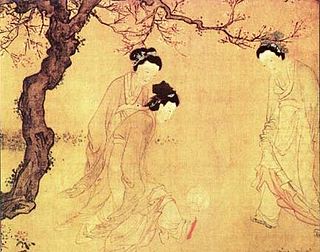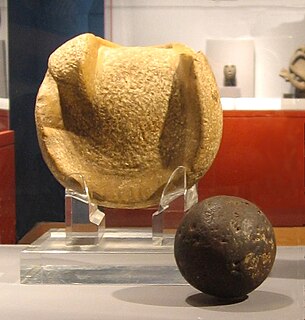 W
WAssamese: অসমৰ পুৰণি খেল-ধেমালিKoni-juj or egg tapping Kori khel Moh juj or buffalo fight Ghora dor or horse riding Dor or running Tarual khel fencing Hen mela or hawk releasing Kaar khel or archery Bulbuli soraai juj or nightingale fight Maal juj or wrestling Bagh-bhaluk juj or tiger-bear fight Ghorial juj or crocodile fight Haati juj or elephant fight Haau khel – lora, dhora, bunda haau Gandh haau Dhoop khel Tanguti Ghila khel Luka-bhaku or hide and seek Dhemona ona khel Laali Furti or gola Hafla Ghila Rosi tona or rope pulling Kodhora tona Kukura juj or cock fight Bhota guti Muthi bhota Mongal potha Haatbol Boitha bol Tinthengia dor Tekeli bhonga Gos kopaati Thati kopaati Fulfuloti Hafula Sul Thukusa Leteku Siloni- siloni Hosoni-bisoni Leskes Haatur or swimming – Siloni or back swimming, Thio haatur or straight swimming Kasuguti – Suloguti, Bais guti or Baagh bool, Pachis guti, dooi guti Kanimuni or blind game Haatha botha or Donda bota Duloni Suwa-sui or touching game Sak ghora bahor theng Sobista bokul guti or sobista tetelir gutir khel Pokha khel or dice Tel diya bah gosot utha climb oily bamboo or tel diya kolgosot utha climb oily banana plant Lathi khel or stick fight Naukhel or boat racing – soranau small boat, pansoinau medium boat, Bornau big boat Hetali Hasiyai Sondali Kukur puwali Khuli khel Kukur thengia Irikoti mirikoti Gos kobadi Hoi kobadi
 W
WChaturanga, or catur for short, is an ancient Indian strategy game that is commonly theorized to be the common ancestor of the board games chess, xiangqi, shogi, sittuyin, and makruk.
 W
WChunkey is a game of Native American origin. It was played by rolling disc-shaped stones across the ground and throwing spears at them in an attempt to land the spear as close to the stopped stone as possible. It originated around 600 CE in the Cahokia region of what is now the United States. Chunkey was played in huge arenas as large as 47 acres that housed great audiences designed to bring people of the region together. It continued to be played after the fall of the Mississippian culture around 1500 CE. Variations were played throughout North America. Early ethnographer James Adair translated the name to mean "running hard labor". Gambling was frequently connected with the game, with some players wagering everything they owned on the outcome of the game. Losers were even known to commit suicide.
 W
WCuju or Ts'u-chü, is an ancient Chinese game which is "thought to have been the earliest form of football". It is a competitive game that involves kicking a ball through an opening into a net. The use of hands is not allowed. Invented in the Han dynasty, it is recognized by FIFA as the earliest form of football for which there is evidence, being first mentioned as an exercise in a Chinese military work from the 3rd–2nd century BC. It was also played in Korea, Japan and Vietnam.
 W
WMarn Grook or marngrook, from the Woiwurung language for "ball" or "game", is a traditional Indigenous Australian football game played at gatherings and celebrations by sometimes more than 100 players.
 W
WA Mesoamerican ballcourt is a large masonry structure of a type used in Mesoamerica for over 2,700 years to play the Mesoamerican ballgame, particularly the hip-ball version of the ballgame. More than 1,300 ballcourts have been identified, 60% in the last 20 years alone. Although there is a tremendous variation in size, in general all ballcourts are the same shape: a long narrow alley flanked by two walls with horizontal, vertical, and sloping faces. Although the alleys in early ballcourts were open-ended, later ballcourts had enclosed end-zones, giving the structure an -shape when viewed from above.
 W
WThe Mesoamerican ballgame was a sport with ritual associations played since at least 1650 BCE by the pre-Columbian people of Ancient Mesoamerica. The sport had different versions in different places during the millennia, and a newer, more modern version of the game, ulama, is still played by the indigenous populations in some places.
 W
WAncient Mesoamericans were the first people to invent rubber balls, sometime before 1600 BCE, and used them in a variety of roles. The Mesoamerican ballgame, for example, employed various sizes of solid rubber balls and balls were burned as offerings in temples, buried in votive deposits, and laid in sacred bogs and cenotes.
 W
WUlama is a ball game played in Mexico, currently experiencing a revival from its home in a few communities in the state of Sinaloa. As a descendant of the Aztec version of the Mesoamerican ballgame, the game is regarded as one of the oldest continuously played sports in the world and as the oldest known game using a rubber ball.
 W
WWoggabaliri is a traditional Indigenous Australian "co-operative kicking volley game".